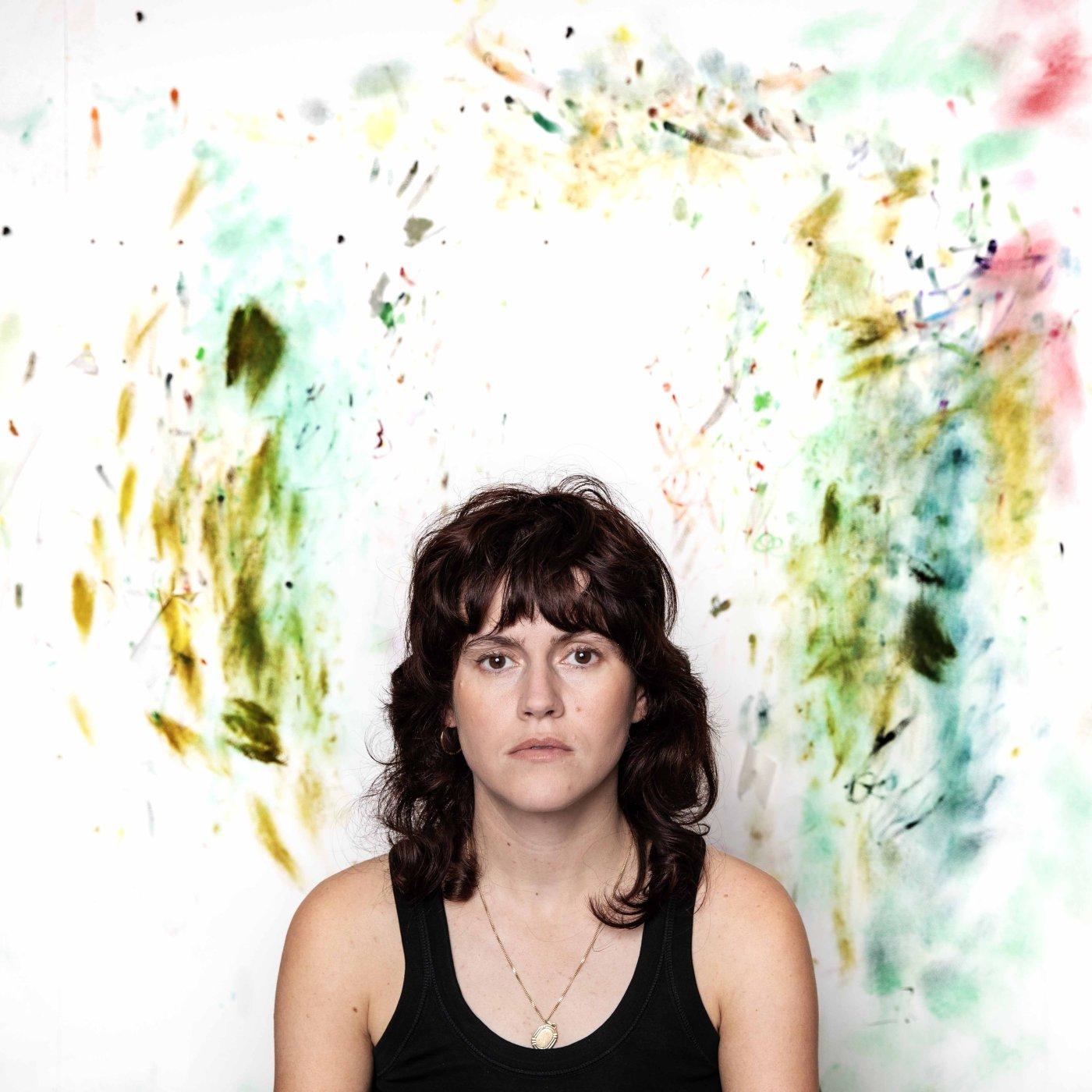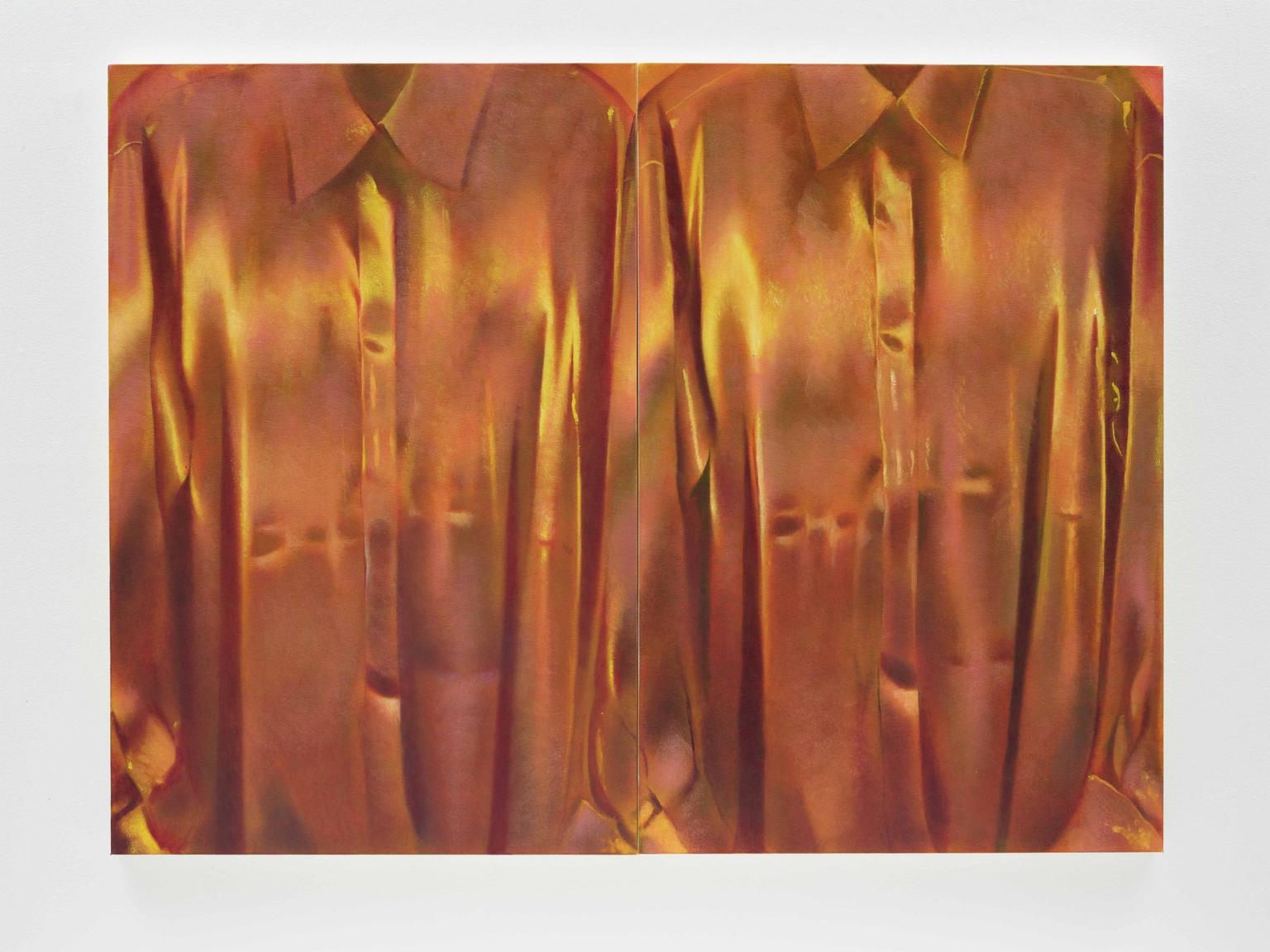Louise Giovanelli: ‘I‘m interested in painting beautiful things, but my paintings have an edge‘

Ellen Mara De Wachter speaks with the artist whose luminous canvases convey the magic, mystery and materiality of paint.
A version of this article first appeared in the winter 2024 issue of Art Quarterly, the membership magazine of Art Fund.

Who is Louise Giovanelli?
Manchester-based Louise Giovanelli was born in London in 1993, grew up in Wales and studied fine art in Manchester and later Frankfurt, Germany. She creates paintings that draw inspiration from historical masterpieces, in particular from the early Renaissance, and visual references from film, images of hair, wigs and draped fabric, especially in the form of curtains. Her often ambiguous subjects explore themes of beauty and horror, theatricality and spirituality, the sensual nature of paint as well as the very act of looking. An exhibition of new and recent work by Giovanelli has opened in November at the Hepworth Wakefield.
Ellen Mara De Wachter: What work are you showing at the Hepworth Wakefield?
Louise Giovanelli: It’s a combination of brand-new work, and some very selective bodies of work from the past two years. These older works include a series of curtain paintings, small-scale female portraits, and paintings of hair, or wigs. Some of the female portraits are inspired by the filmic horror genre, including two pieces based on the 1976 film Carrie, and a portrait from a series called Entheogen. It depicts an open-mouthed woman with a green, sickly pallor, accepting the Eucharist [the Christian rite in which bread and wine are consecrated and consumed]. This one is a bit more religious, or spiritually themed. And within that theme, there are also works in the show that explore unbinding, transubstantiation and altered states, where the picture includes drinking paraphernalia, for example, a wine glass.
EMDW: Entheogen – meaning psychoactive substances used in religious or spiritual rituals – is an intriguing word?
LG: The root of that word is ‘entheos’, which means ‘with god’. I’m interested in the Latin and Greek roots of words and in etymology. That particular image is ambiguous because of how I’ve cropped it, and that’s intentional. Some people think that the woman is taking a pill, like an ecstasy-type thing. Her expression is also ambiguous, so it could be euphoria, it could be erotic, it could be all these different things. That’s important.
EMDW: Your paintings convey an exquisite sense of texture and luminosity. What different techniques do you use?
LG: My painterly techniques shift and change a lot, and I’m still learning. Oil paint is so malleable and flexible, you learn things every day that you didn’t realise it could do. But there are some core techniques that I’ve always used.
Probably the most obvious one is the glazing technique, like the Old Masters used, which is a very traditional use of underpainting. You cover the canvas entirely with a pigment and then you wipe off that pigment to reveal volume and form. That’s really fundamental to what I do. The underpainting acts as a blueprint for the rest of the work, so if you get the underpainting wrong, it’s all going to be wrong. Then you glaze over the top with transparent glazes, and that’s how you build up colour and texture.
Sometimes I use a stippled, almost pointillist technique, which registers in the end like shards of light, or glitter, or a hazy texture. Both of those techniques are really about light: the first is about all light exuded and the second is about all light absorbed. Light is probably the thing I’m thinking about the most. I also work with the best quality paint that I can – really good pigments and materials – and I think if you get that right then there’s a luminosity to the works and a vividness that is integral and can amplify the image.
EMDW: You have spoken about painting as a kind alchemy; what do you mean?
LG: A lot of the things I paint, I paint them because it’s a challenge to recreate that type of fabric or effect or light phenomenon. If I see something as a challenge, I have to do it, to prove to myself that it’s possible. Like with the gold that appears in some paintings, some people think it’s gold paint, but of course it’s impossible to have real gold paint. There is, however, a way to paint gold and I found it out, as did so many other painters. There’s a really enjoyable challenge to doing something like that, which is crazy when you think about it because, essentially, you’re applying a type of mud to a canvas. When I think of it like that, it is quite magical, to be able to connect pigments together and have it create something so different and so luscious. That’s the alchemy.

EMDW: What is it about Old Masters and Renaissance art that resonates with you?
LG: The Renaissance was incredibly significant to how I learned to paint, or to how I taught myself to paint, because I used to go around museums and galleries on trips to Europe and look at the historical collections, which were predominantly Renaissance paintings. I would make copies of small excerpts of those paintings, which I guess is a traditional way of learning how to paint.
But saying ‘the Renaissance’ is a bit too broad, probably. The period that inspired me the most and probably still does is the Pre-Renaissance, the 1200s and 1300s with Giotto, Cimabue, Simone Martini. And then the Northern Renaissance, or the Flemish School. Something about the Pre-Renaissance really affected my sense of perspective, because those artists were making paintings before linear perspective was entrenched. So you get things like a man depicted as big as a house and all the people are twisted. I find it fascinating.
When I think about my own paintings in relation to that, I realise that I never have any sense of perspective in the background. In all my images, whether of curtains, portraits, hair, everything is really close up to the surface. It’s preventing any looking back or peering through, perspectivally. And I wonder if that’s because of my fascination for the Pre-Renaissance.
EMDW: Are there particular works from this period that you like?
LG: The paintings I like the most and am drawn to are the ones where I can’t work out what’s going on or how they’ve done it, or what the entire meaning is, and it makes me want to look at it again and again and again. That’s what I want to replicate as an artist: how do you keep the viewer’s attention; how do you keep their eyes within the canvas? You can do that in so many ways: formally, in terms of the composition and what you’re showing, but you can also do it in terms of the subject matter. If you’re able to do both together, I think you’ve got a really interesting painting that’s timeless.
EMDW: There’s often an atmosphere of mystery and anticipation in your works, particularly your curtain paintings. Are these based on curtains in particular places?
LG: At the Hepworth Wakefield there will be two very grand theatrical curtains, but I have also painted curtains from a working men’s club in London, and a pub where people sing. Some are curtains you’d find in a house, that I elevate so they feel like they’re more than they are. I find curtains endlessly fascinating as a motif. The more you look for them, the more you’ll find them in unexpected places. I’m interested in the spectrum of where curtains appear, in high and low culture, in theatres, performances, backdrops, stage plays, but equally in nightclubs and seedy bars. I’m also fascinated with their function and what happens when you place a curtain somewhere. For example, in a working men’s club or bar, if there’s a curtain hung on a small stage, it gives a green light to perform or act in that way.
EMDW: Do you use a source image for those works?
LG: Yes, I’ll have a source image on my computer. The initial stages of taking the photograph, manipulating it digitally, doing whatever I need to do and cropping it are important, because if that’s not right, I’m not that good at changing it on the painting.
With paintings inspired by film stills, it’s a very organic process. I don’t search for an image, I find it’s much better to watch a film and if something pops out, I pause the film and if it’s online, I can slow it down and screen-grab every millisecond to find the exact expression of the figure or whatever it is that I think is most suitable for that painting.
Then it’s a process of looking through all those images and reconfiguring them. Deciding where, exactly, to crop the image is probably the most important thing: What information am I leaving in? What am I removing? What format should it be? That dictates the format of the canvas, and format is really important. Sometimes I change the colouration of the source image digitally, and sometimes I do that in the painting itself.
EMDW: Your paintings seem to be about something more than the purely visual. How do other senses, like touch, for example, come into play for you?
LG: I guess making the paintings is me trying to figure out the answer to that question because I do seem to be drawn to tactile materials that have a luxurious quality or a softness or sensuality to them. I have always been interested in beautiful things and in painting beautiful things, as I think most painters throughout history have been. The things we hold to be beautiful in society are often things like fabric, drapery and sparkles, and hair – long, female hair that is luxurious and to be desired. Maybe it’s to show that we still aspire to these moments of worship.
EMDW: And does that also connect back to the religious?
LG: You could connect it back to the religious dimension, that humans have always worshipped something that is of higher value than themselves. Looking at icons, Madonnas and light have been so important throughout that religious period. I am becoming more interested in that beautification of stuff, and in trying to subvert it. My paintings are beautiful but there’s an edge to them, a darkness of tone or mood, a feeling that something’s not quite right. I want them to register as both things at the same time, which I think is really hard to do: to make people feel, ‘This is alluring, and I want to look at it and it’s beautifully painted, but it’s giving me a sensation of unease.’ I’m thinking about that a lot, trying to imagine a subject matter that is not beautiful in any way at all, potentially even grotesque, but then painting it in the most beautiful way that I can. That might be a challenge that I’m going to give myself for next year.
‘Louise Giovanelli: A Song of Ascents’, 23 November 2024 to 27 April 2025, the Hepworth Wakefield. 50% off exhibitions and 10% off in shop with National Art Pass.